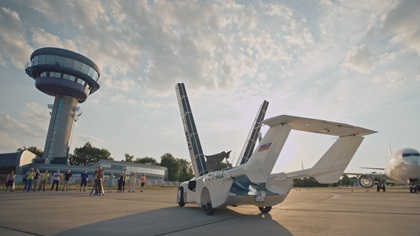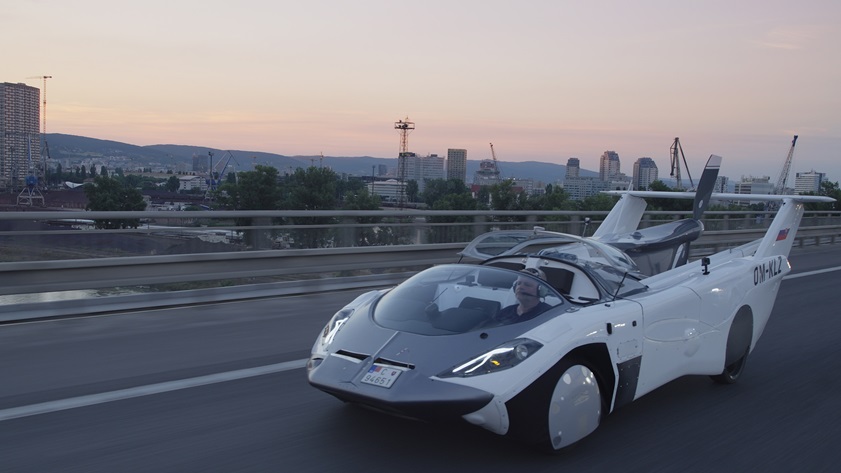Flying car flies, drives for audience
Klein Vision AirCar expands envelope
Professor Stefan Klein’s curious creation, an AirCar that sprouts wings with the push of a button, used those foils to good effect on June 28 to fly between two Slovakian cities, then complete the journey downtown by road in about half the time this trip would typically take.
Klein Vision invited media to Bratislava, Slovakia, to witness a demonstration of speed.
This act of aeromotive origami followed a 35-minute flight from Nitra, Slovakia, and several cameras captured the action as an airplane with a lifting body fuselage and twin-boom tail surrounding a single propeller became a car. Company co-founder Anton Zajac joined Klein aboard his creation for the final leg of the journey downtown on local roads.
“This flight starts a new era of dual transportation vehicles,” Klein pronounced upon exiting the AirCar in Bratislava, according to a June 30 press release. “It opens a new category of transportation and returns the freedom originally attributed to cars back to the individual.”

AirCar Prototype 1 is equipped with a ballistic parachute and a 160-horsepower BMW engine with a fixed-pitch propeller. The next prototype will be the pre-production version and will be equipped with a 300-horsepower engine. The company plans to seek European CS-23 certification and an M1 road permit. A variable-pitch propeller, combined with the horsepower increase, is expected to give the next prototype more impressive performance: a 162-knot cruise and more than 600 miles of range.
While the company was not shy about superlatives, calling the June 28 demonstration the “first-ever inter-city flight” by a flying car, it’s possible that Terrafugia accomplished such a feat more privately during years of testing in the United States before that company founded by Massachusetts Institute of Technology graduates decamped to China in February.
Whether Terrafugia’s Transition, designed within light sport aircraft requirements (with a waiver for weight), ever flew so far or not, it would surely not win an aesthetic contest with Klein’s AirCar. Where the Transition prototype was more reminiscent of an old-fashioned milk truck with wings that would never be confused with a million-dollar “supercar” on the ground, the AirCar’s more streamlined, low-slung design prompted university research fellow Stephen Wright, who was interviewed by the BBC, to describe the AirCar as “the lovechild of a Bugatti Veyron and a [Cessna] 172.”
“I have to admit that this looks really cool—but I’ve got a hundred questions about certification,” Wright continued. “Anyone can make an aeroplane but the trick is making one that flies and flies and flies for the thick end of a million hours, with a person on board, without having an incident.”
Klein notes on the company website plans to develop a range of models, including three- and four-seat variants, a twin-engine variant, and an amphibious version.





